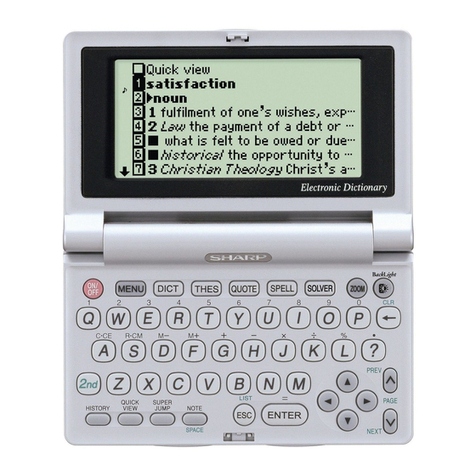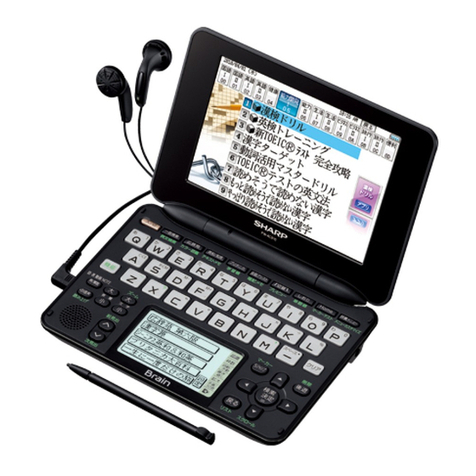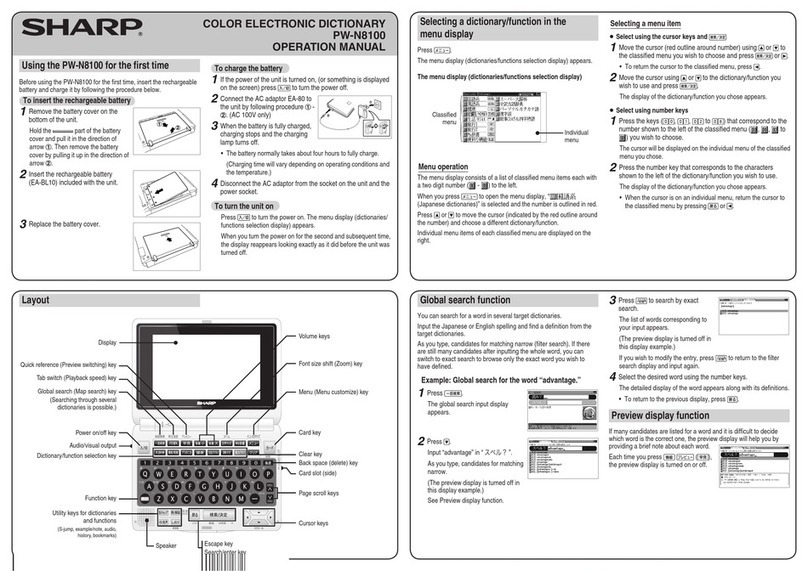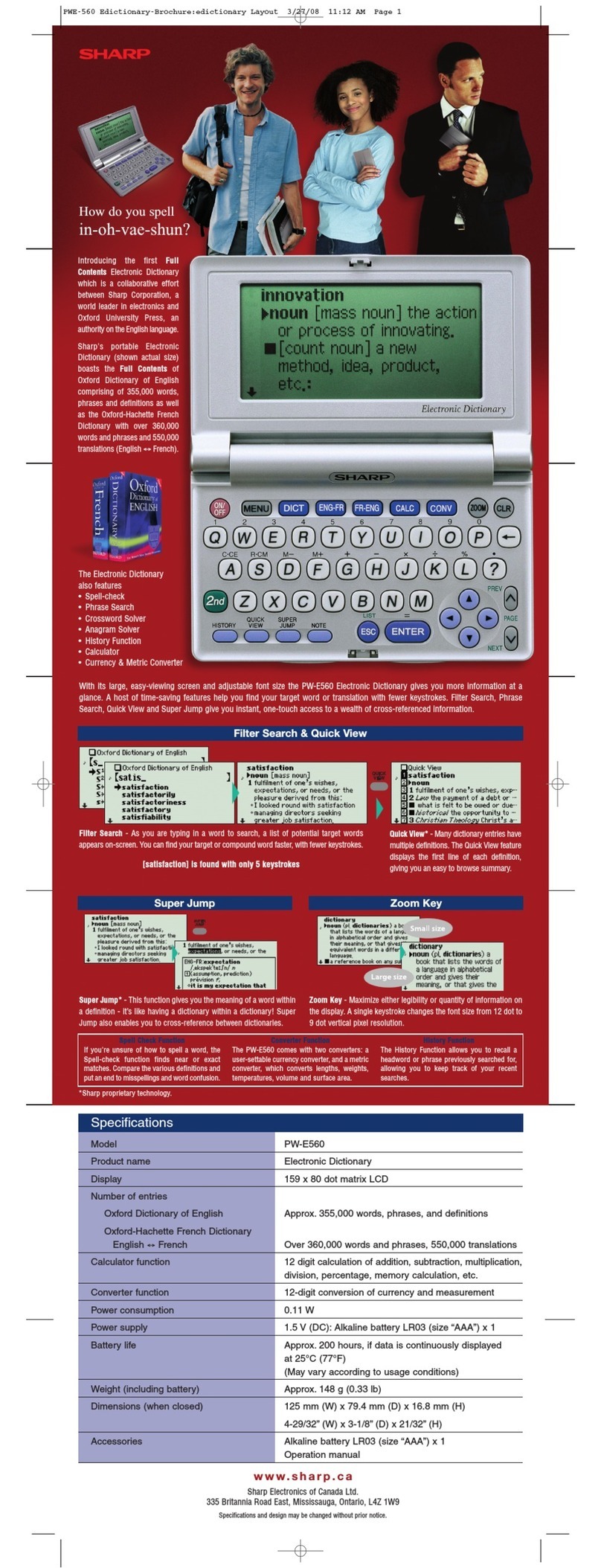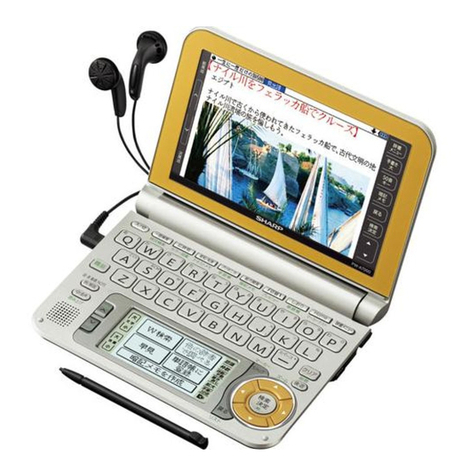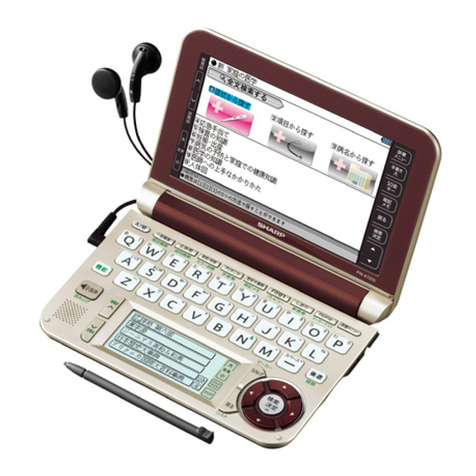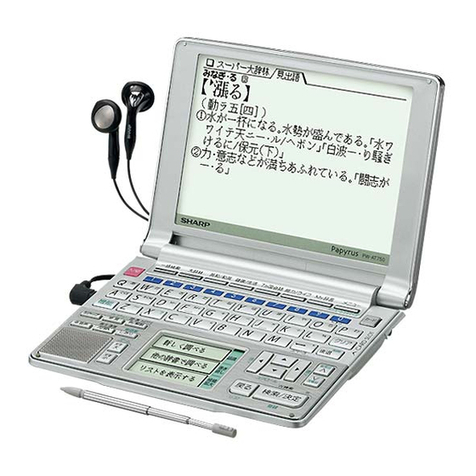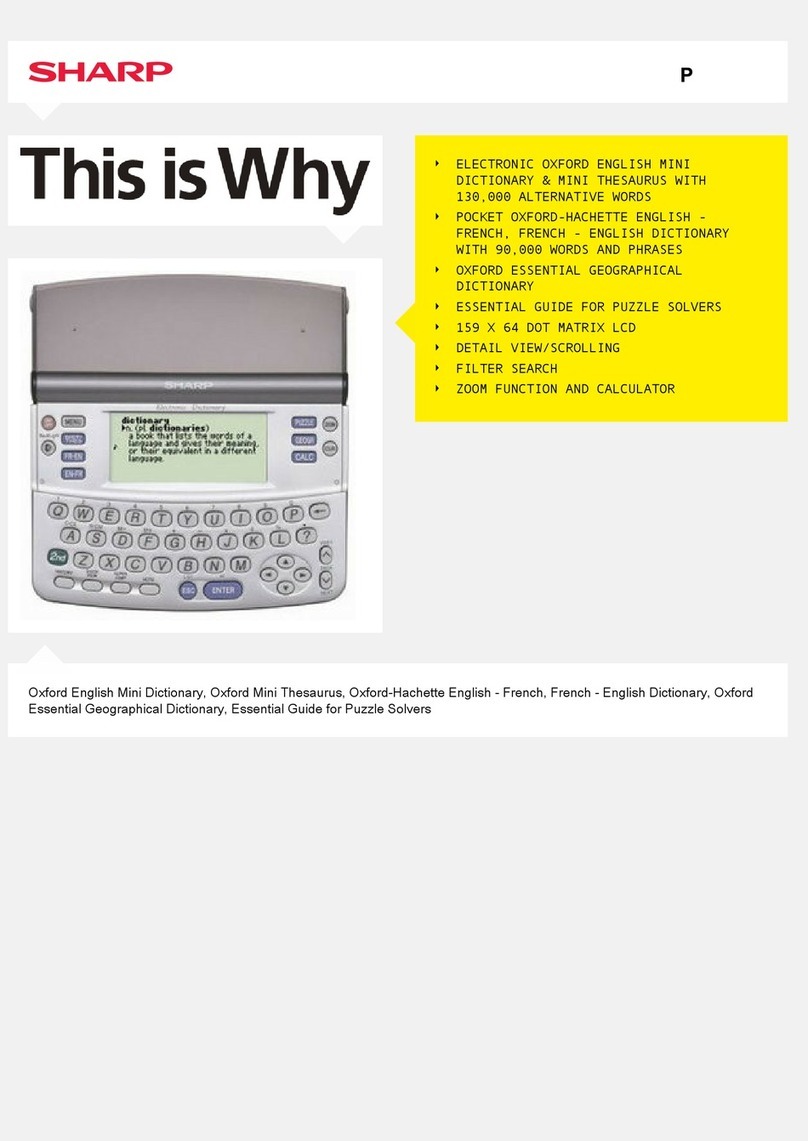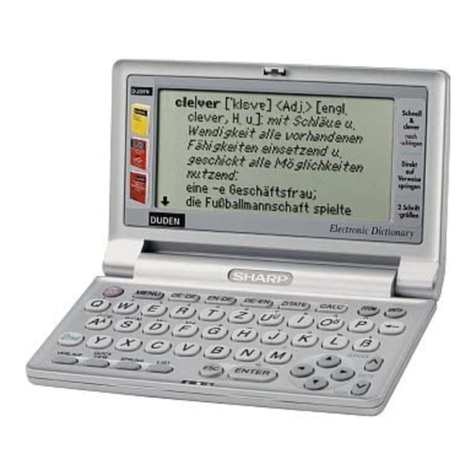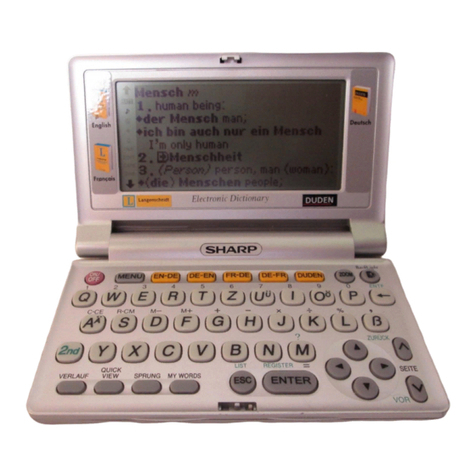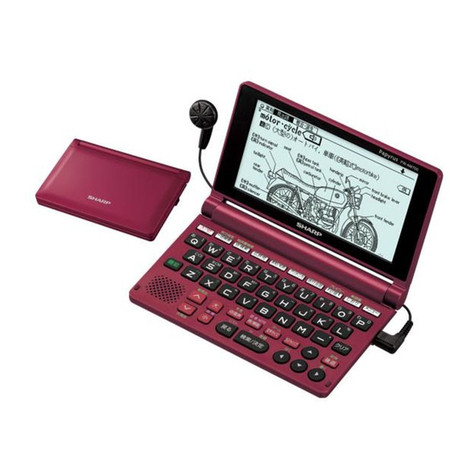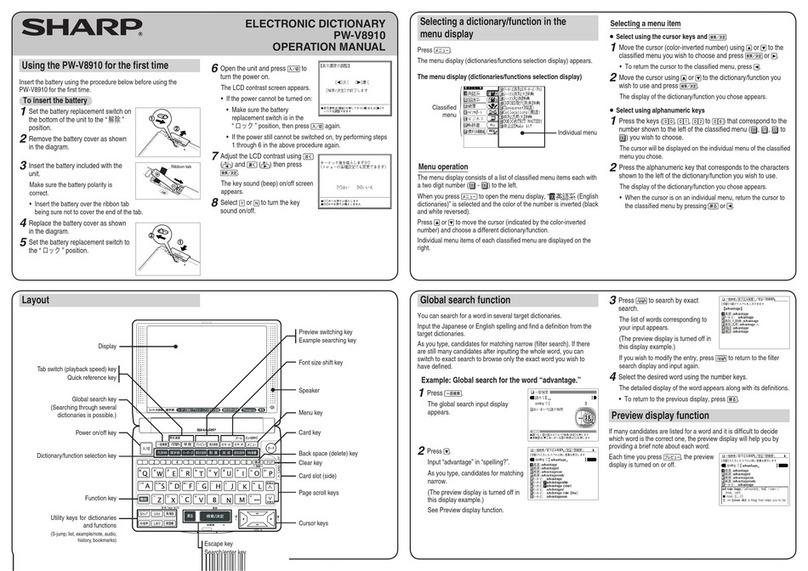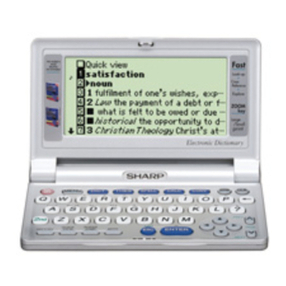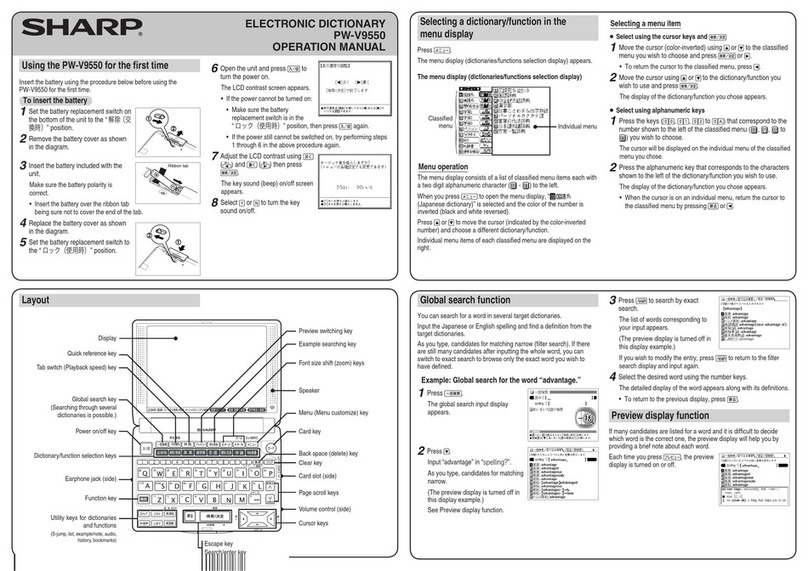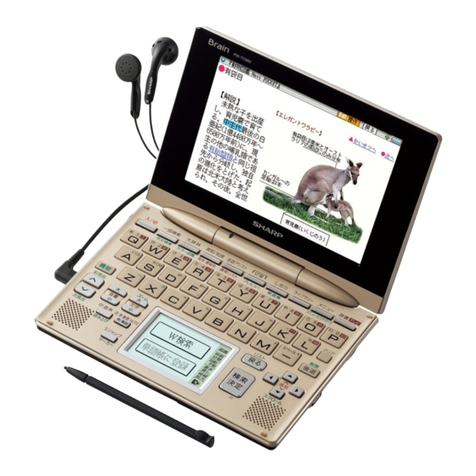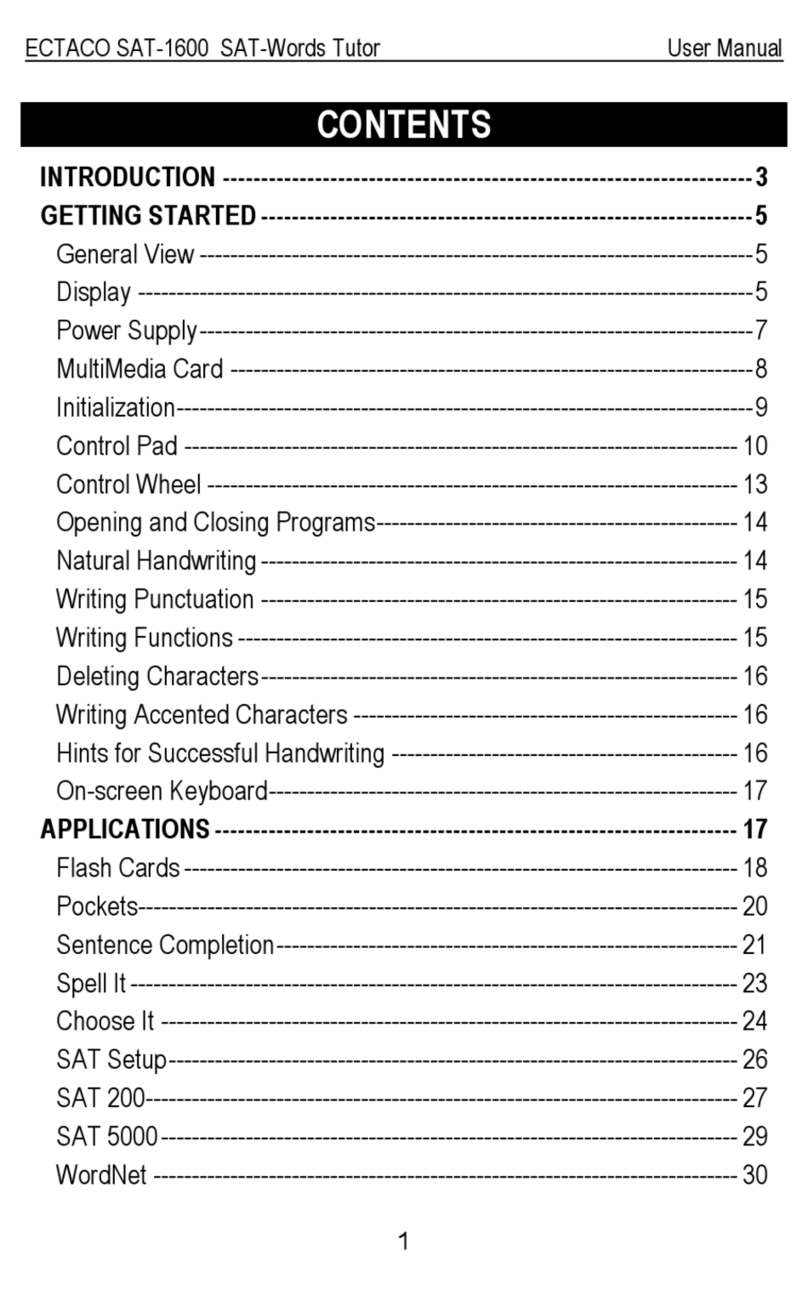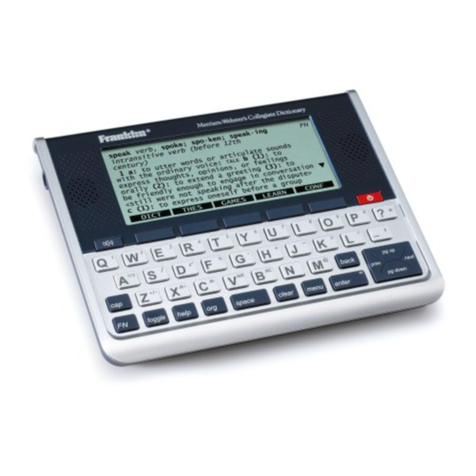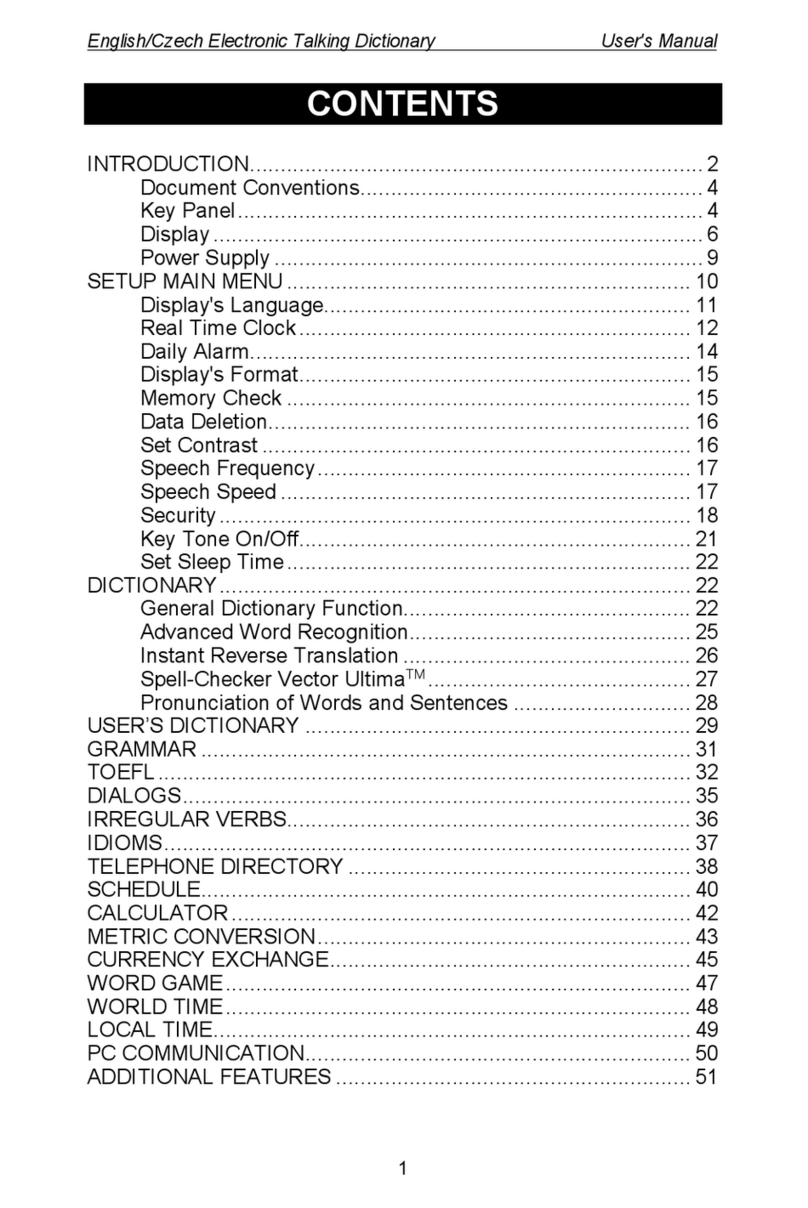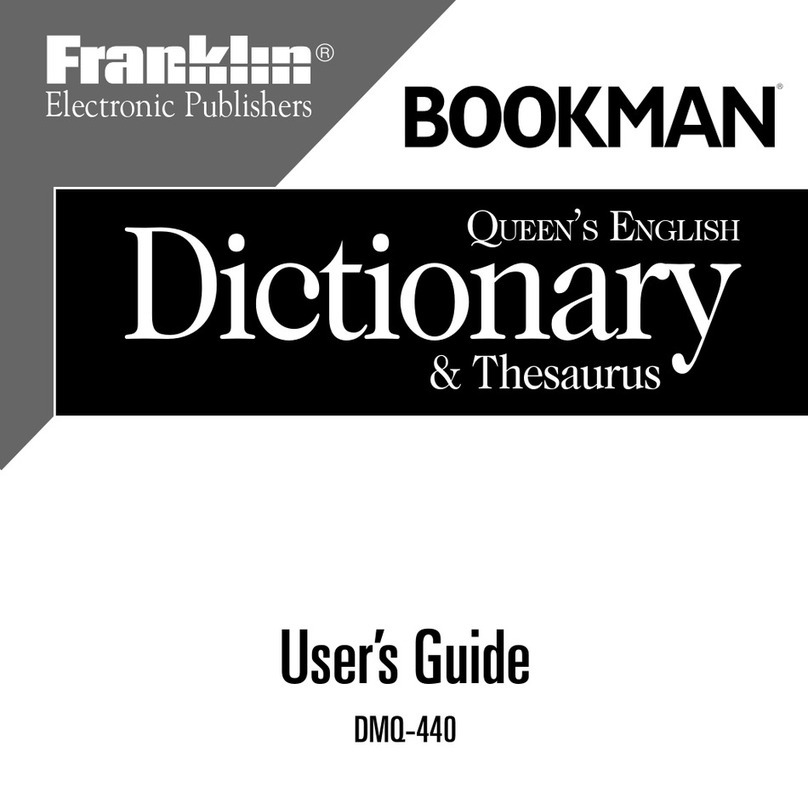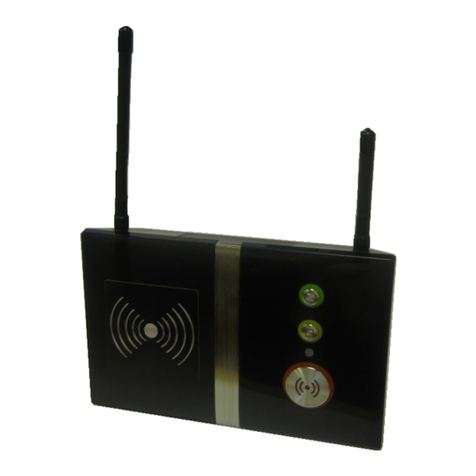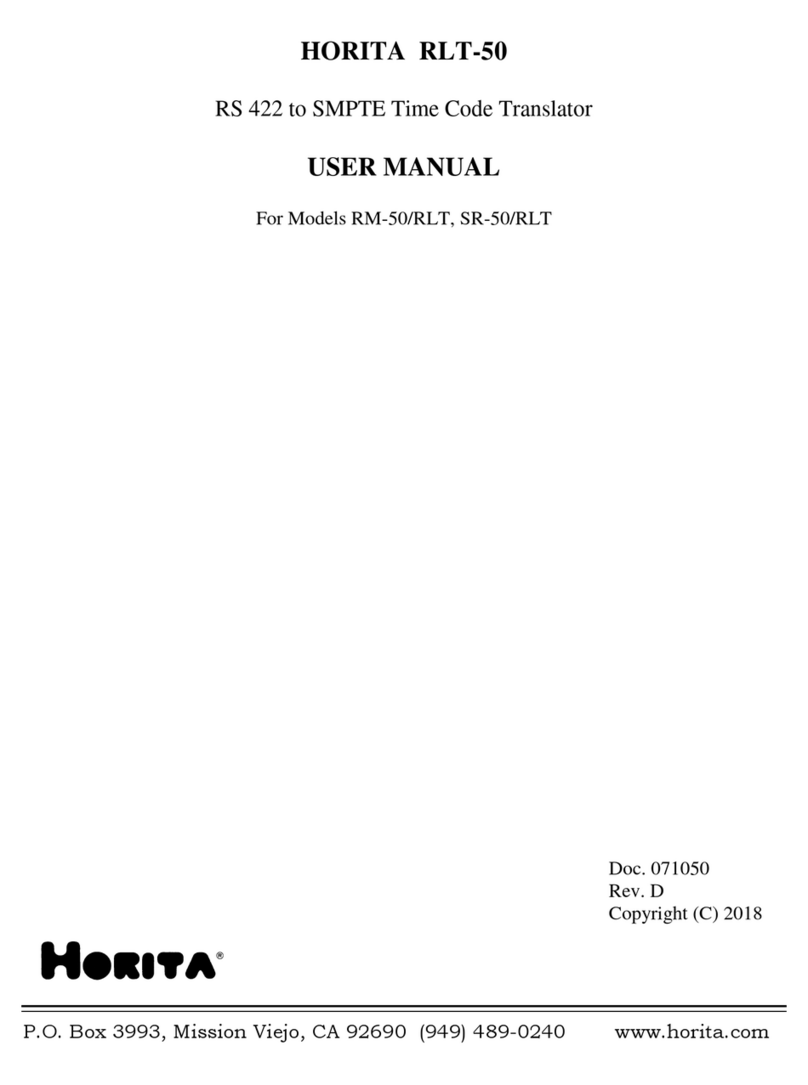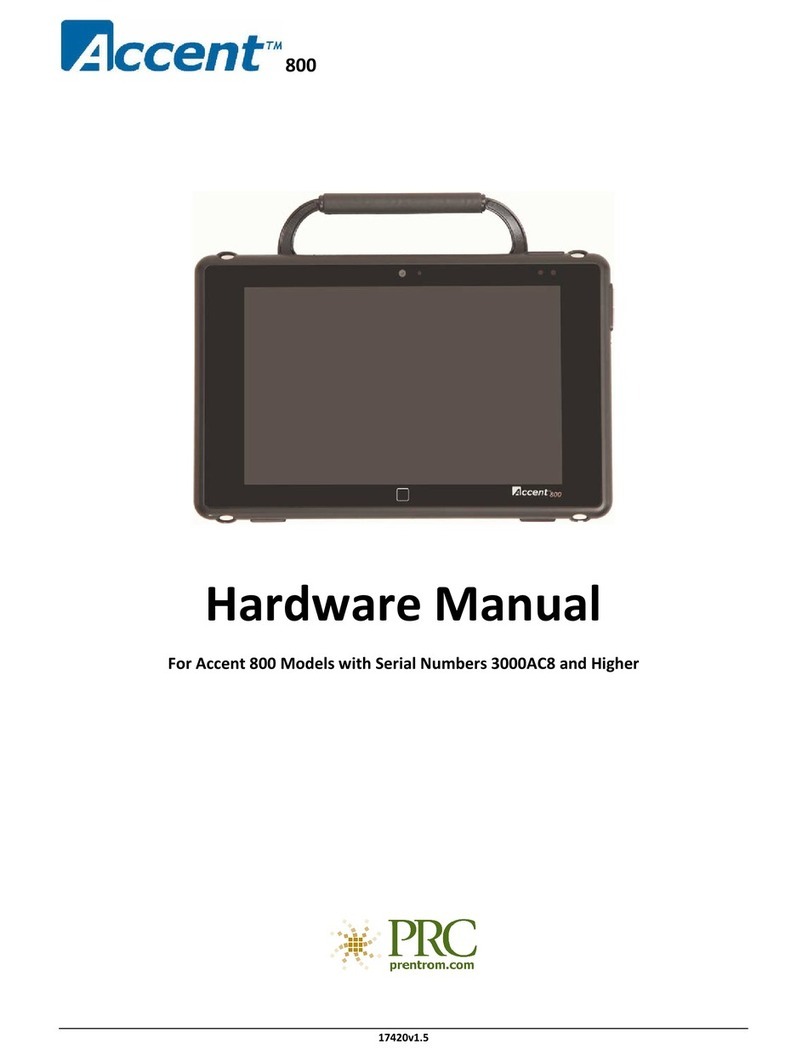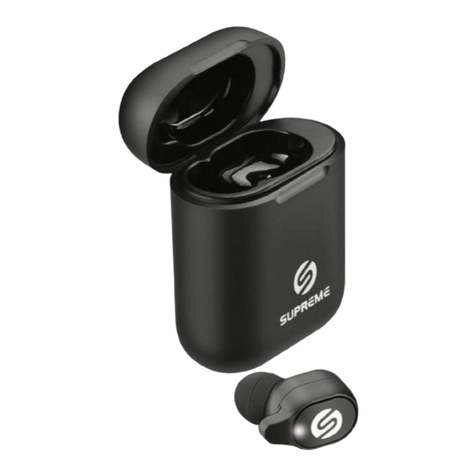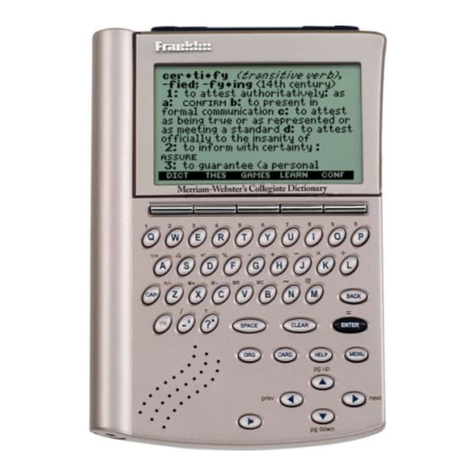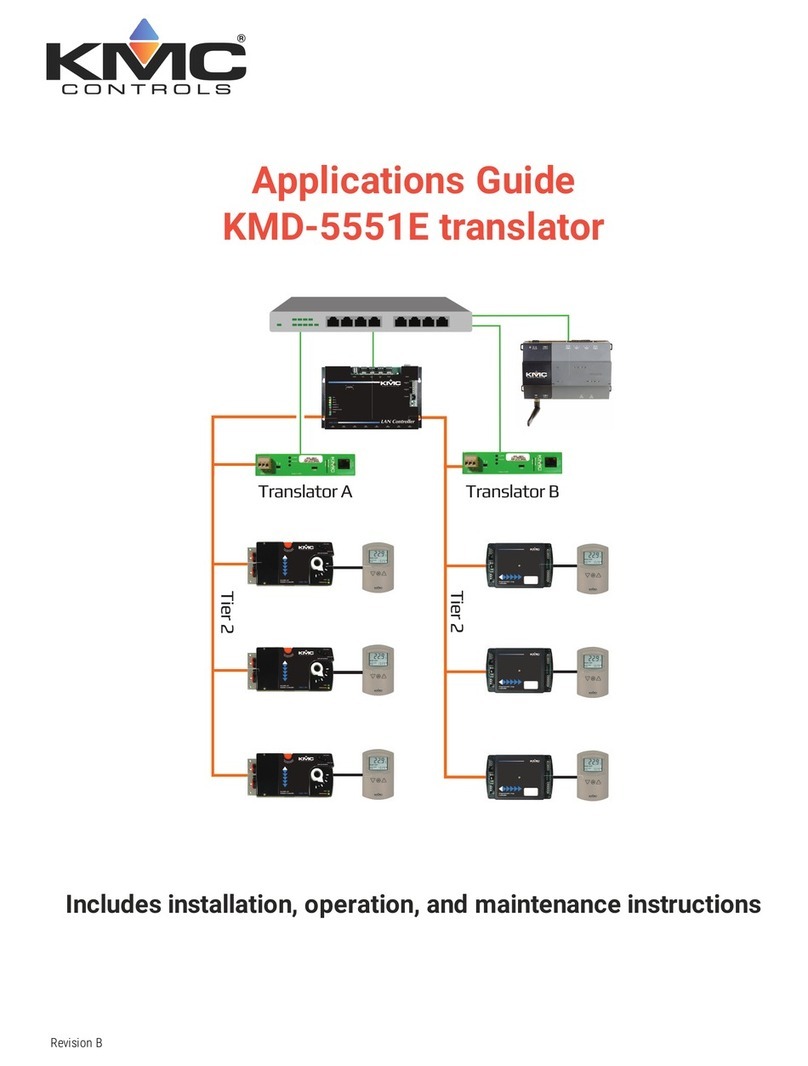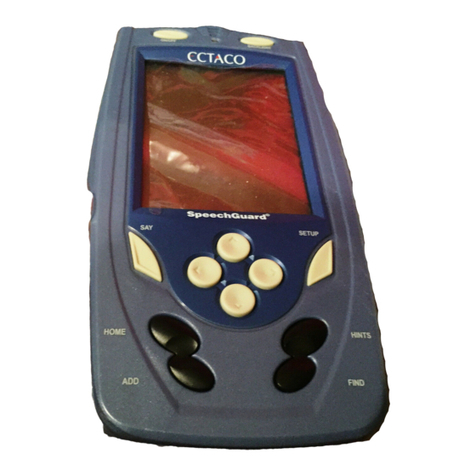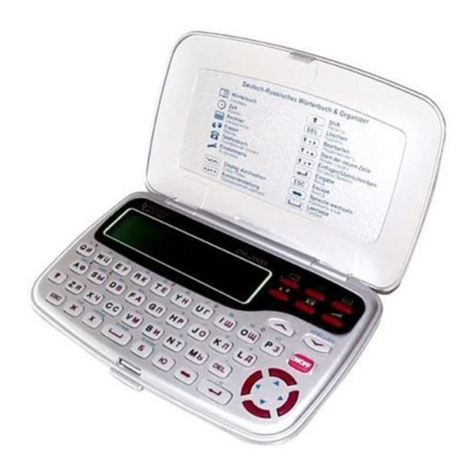Entering characters using the frameless pad
Example: Enter the word “clump” in an English-Japanese dictionary
1
Before entering the word in an English-Japanese dictionary,
touch
枠数
to switch the pad to the frameless pad. *
* You can only switch to the frameless pad when entering alphabet characters.
2
Use the stylus to write the word “clump” in the handwriting area.
If automatic recognition is set, the character will be
recognized and a candidate character will appear in
the character entry display area 1 to 2 seconds after
the stylus has been removed.
If manual recognition is set, write the final character
and then touch 認識 to let it be recognized. For
longer words, enter up to twelve characters and
touch 採用 to transfer them to the entry area.
3
If the word is correctly recognized, touch 採用 to transfer it
to the entry area.
Points on writing handwritten characters
Paying attention to the following points will ensure that handwritten characters are
easily recognized.
• Write each individual stroke clearly. Ensure that characters have the correct
number of strokes.
• Write clearly and do not use short or conventional forms. Avoid writing
sloping characters.
• On the single-frame or dual-frame pad, write lower case characters smaller
to distinguish between identical-looking upper and lower case characters
such as upper case “C” and lower case “c”. Small characters such as the
small “っ” should also be written smaller.
• Write English letters in block form and do not attach ornamentation to the
ends of strokes.
• When using frameless entry, write English characters separately, one at
a time. You cannot write in cursive style or return to previously formed
characters to add dots or crosses.
• When using frameless entry, write words on a single line. You cannot write
on two lines.
• When writing letters, do not press hard; always write lightly.
Entering in 漢字源 by writing large characters
Draw the kanji on the touch pad.
1
Press
辞書
メニュー
and select “漢字源” from “国語Ⅰ” .
The criteria entry screen for 漢字源 appears.
2
At the criteria entry screen for “漢字源”, touch “大きく書
いて漢字を調べる” on the touch pad.
The handwriting recognition screen appears.
3
Draw the kanji to search (Eg.
“福”), in the handwriting
area on the touch pad
displayed in Step 2.
The candidates for the kanji appear
in the candidate list area.
• When using manual recognition, or to have the dictionary recognize
immediately after you finish writing the kanji, press 認識 .
4
Select the desired kanji and
press 検索/決定 .
The details screen shows
information about the kanji, as well
as its pronunciation and definition.
Using the mark on the screen
Appearance of the
mark on the details screen indicates more information related to the entry is
available, such as example sentences, explanations, notes, illustrations, diagrams,
tables, and videos.
By pressing 例/解説 in screens where this mark is displayed, the mark will
display inverted.
When there are multiple marks, move to the desired mark by using , ,
, or . By pressing 検索/決定 , the contents are displayed.
To exit, press 戻る twice.
Listen to audio
When the mark appears, audio of the displayed information can be played
back.
Press to select the first mark, and the color of the mark is inverted.
Press , , , or to move the highlight to the desired mark and
press 検索/決定 (or touch the mark) to play back the contents.
Example: Play back the audio using “英会話とっさのひとこと
辞典”.
1
Press
辞書
メニュー
, use to select “英語Ⅰ”, and then
use to select “英会話とっさのひとこと辞典”.
Press 検索/決定 until the details screen is displayed.
2
Press and the mark
becomes inverted ( ).
Each time you press
検索/決定 , the audio plays.
If several marks appear, press or to move the cursor to
the desired mark and press 検索/決定 .
By highlighting an English word and pressing 検索/決定 , you can look up
the word in English-Japanese dictionary and play back the audio.
◆Press 戻る to stop the audio during play. Press 戻る and the color
of reverts to non-inverted.
◆Use 音量小 or 音量大 to first set the volume to low, then adjust it
to the desired level.
S-jump function
You can search through the contents for the definition or meaning of a word on the
details screen.
Example: Use S-jump from the ジーニアス和英辞典 screen.
1
Press 英和/和英 .
T
he entry/select screen for ジーニアス英和&和英辞典 is displayed.
2Press to
select Japanese entry field, type “あいさつ/
aisatsu” and then press 検索/決定 .
The “あいさつ” screen of the Japanese-English Dictionary is displayed.
3
Press Sジャンプ .
The cursor ■appears.
• Instead of pressing Sジャンプ , if you touch or highlight words by
dragging, the function selection screen appears.
If you select “Sジャンプ(語句を別の辞書で調べます)
”, the
jump window appears.
4
Move the cursor using , , , or to the desired
word.
• English words or the word indicated by the jump mark ( ) are selected
in whole. Each time you press Sジャンプ , you can jump to an English
word, skipping Japanese.
• To select a Japanese word, you must first mark the start and end points
using the cursor or by touching the screen, or by dragging over the words
to highlight them.
Example: Marking the word “言葉”
Move the cursor “■” to the starting point “言” and press 検索/決定 . Then
press
to move the cursor “■” to the end point “葉”. (If you wish to mark a
one letter word, you do not have to mark the end point.)
• To do this through touch operation, touch the starting point “言” and drag
the stylus until the end point “葉” is highlighted.
5
Press 検索/決定 .
A list of candidates appears in
the jump window.
•
If the word is indicated with or
there is only one match, the details
screen appears in the jump window.
6
Select the desired word and then press 検索/決定 .
The details screen appears in the jump window.
7
Press 検索/決定 to jump the screen.
The details screen of the selected word appears.
• To return to the previous screen, press 戻る .
Selecting functions by touching
You can select various functions by touching the screen with the stylus, (or highlighting
by dragging).
1
Press 英和/和英 .
2Enter the word (Eg.: “header”) in the “スペル?” field, and
press 検索/決定 .
3
Touch the starting point “文”
and drag to highlight the
words up to the end point “ど”.
4
Touch the function to execute (Eg.: “マーカー (マーカーを
引きます)” (mark user-selected words).
The marker color selection window appears.
5
Select the marker color to use (green, yellow, pink, orange,
purple).
The words are registered in the word dictionary and marked in the selected color.
• To select a different function such as Audio or S-jump, select the desired
function in Step 4 by touching it.
Entering characters using the handwriting pad
Parts and functions
The handwriting pad is set to enter characters when the cursor is in any part of
the character entry area.
[Single-frame pad]
•
Touching the 枠数 button switches the single-frame pad to the dual-frame
pad or frameless pad.
認識 button
枠数 button
自動/手動 button
書き直し button
拡大 button
手書
/
50
音
button
Backlight button
Handwriting area (frame)
Candidate list display area
スペース
button
Character entry type
indicator
Automatic/manual
recognition indicator
Entering characters using the single-frame pad
Example: Enter a Japanese word “持つ” from a Japanese-English dictionary.
1Press 英和/和英 and then to move the cursor to the
Japanese entry area.
The handwriting pad is now switched to enter kanji and kana.
2
Use the stylus to write “持” in the handwriting area.
3
If the character in the entry area is not the one you desired,
use the stylus to touch and select the desired character in
the list.
The character in the entry area changes.
• If you cannot find the character in the list, touch 書き直し or press
後退 to erase it and redraw it on the pad.
4
Likewise, enter “つ” in the entry area.
5
Press
検索/決定
.
The details screen appears.
The character shown in the candidate list display area
is also placed in the entry area so that the dictionary
search can proceed.
• When the manual recognition is used or when you
want to have the entry recognized soon after you
finished writing, press 認識 .
•
When you start drawing, the previous entry is confirmed
and then erased.
Handwriting area

